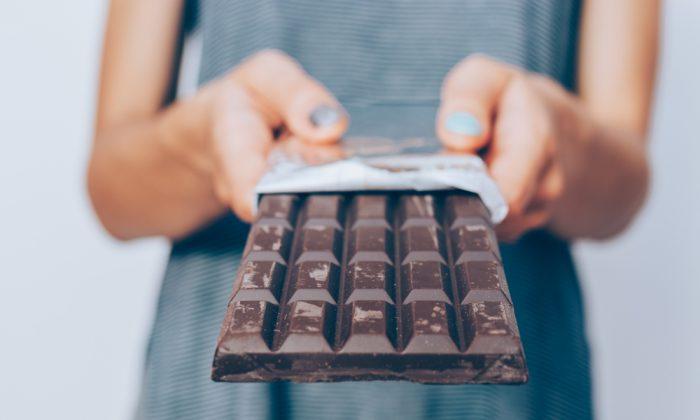While there are tips to minimize exposure, including knowing which bars have lower levels of heavy metals, chocolate lovers may want to know how heavy metals get into these treats in the first place.
A 2018 California consent judgment between nonprofit advocacy group As You Sow and the world’s largest chocolate companies established industry standards for heavy metal limits in chocolate products.
In response to the judgment, the National Confectioners Association and As You Sow—with contributions from more than 30 chocolate companies—released a three-year expert research study.
Between 2019 and 2022, the expert committee studied how lead and cadmium might contaminate cacao.
The researchers found cacao plants take up cadmium from the soil before harvest, with the metal accumulating in cacao beans as trees grow, similar to how heavy metals contaminate other foods.
Lead levels are influenced by where and how the cacao beans are handled by humans after harvest, the committee found.
Post-harvest lead contamination mostly happens during the outdoor fermentation and drying of beans, during which soil and dust that contain lead come in contact with the cacao bean shell, according to the committee.
Fermentation of cacao beans occurs in bags, covered piles and wooden boxes. Outdoor drying has been observed along roadsides, on concrete patios, drying tables, plastic tarps and directly on the ground.
The beans are naturally coated with a sticky pulp known as “baba” or “mucilage” which allows lead to cling to the beans while they are being fermented and dried in the open.
In some countries where cacao beans are grown, bans on leaded fuel, which can lead to roadside soil contamination, were introduced later than the bans in the U.S. Less time between leaded fuel bans and current harvesting processes can contribute to higher levels of roadside lead contamination in some places, said Dr. Holly Davies, a toxicologist at the Washington State Department of Health.
Bean cleaning and shell removal at chocolate manufacturing facilities also play a significant role in lead exposure—lead on the cocoa bean shells is transferred to the cocoa nibs and the subsequent chocolate liquor produced from nibs, according to the committee.
Unlike lead, cadmium in cacao beans is introduced from soil through tree roots.
Soil additives such as limestone or zinc can reduce cadmium uptake without causing significant root damage, but cacao trees are grown in perennial orchards, where it is difficult to incorporate such additives, wrote Rufus Chaney, a senior research agronomist in the committee.
Cacao plants take the cadmium up from the soil through roots and deposit it in the nibs (center) of cacao beans.
The amount of cadmium is highly variable and changes from farm to country, according to the committee.
The expert committee recommended changes to harvest and manufacturing processes to reduce lead contamination: minimizing soil contact with beans, drying beans on tables, using protective covers and clean tarps away from roads, improving existing mechanical cleaning and processing equipment, and evaluating the use of rapid lead test kits and rapid soil testing.
For cadmium, the committee recommended efforts to increase soil pH to reduce cadmium uptake, carefully breeding or genetically engineering plants to take up less cadmium, replacing older cacao trees with younger ones, and removing or treating soil known to be contaminated with cadmium.
Copyright 2023 The Seattle Times. Visit The Seattle Times at www.seattletimes.com. Distributed by Tribune Content Agency, LLC.






